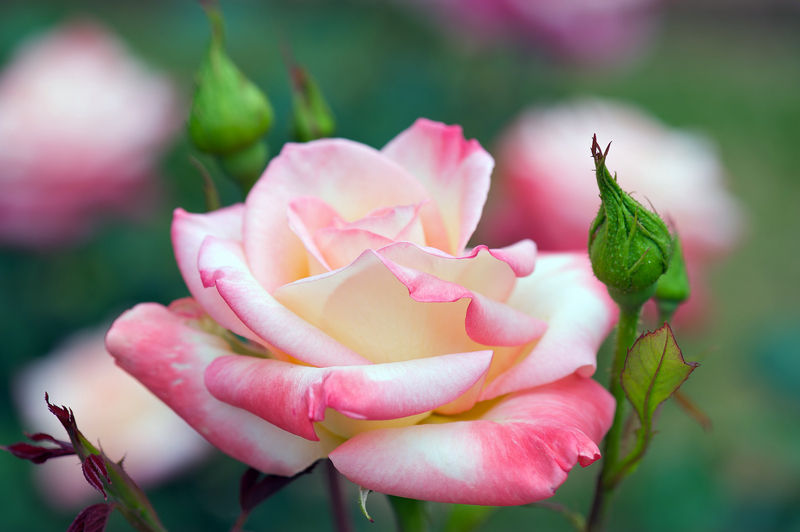Designing a Welcoming Garden for Kids to Explore
Posted on 09/06/2025
Designing a Welcoming Garden for Kids to Explore: A Comprehensive Guide
Are you dreaming of creating a wonderful garden space that entices children to step outside, play, learn, and connect with nature? Designing a kid-friendly garden goes far beyond planting colorful flowers or setting up a sandbox. It's about crafting an interactive, welcoming garden for kids to explore, grow, and thrive. This guide provides detailed insights and practical tips to help you transform your backyard into a magical world where curiosity and nature meet.

Why a Kid-Friendly Garden Matters
A welcoming garden for kids isn't just about aesthetics--it's an opportunity to foster lifelong learning, creativity, and physical well-being. Studies show that children who spend time outdoors enjoy improved concentration, reduced stress, and greater physical fitness. Gardens designed with exploration in mind ignite curiosity, encourage independent play, and create special memories.
- Emotional Benefits: Nature-based play can help improve mood, foster resilience, and cultivate mindfulness.
- Physical Benefits: Gardening encourages movement, coordination, and gross motor skill development.
- Educational Benefits: Kids learn about plants, insects, seasons, and ecosystems through hands-on exploration.
Key Principles for Designing a Kid-Friendly Garden
1. Prioritize Safety First
Safety is the cornerstone of any garden for children. Choose non-toxic plants and avoid sharp tools or hazardous materials. Fencing may be necessary to keep kids in a designated area, and pathways should be wide, even, and non-slip.
- Avoid thorny or spiky plants such as roses or holly.
- Steer clear of toxic plants like foxglove, lily of the valley, and oleander.
- Secure ponds or water features with proper barriers.
2. Make It Inviting and Accessible
A welcoming garden for kids should invite them in. Use brightly colored flowers, playful garden decor, and child-sized furniture. Ensure there are shaded areas for sunny days and accessible paths for all abilities.
- Install low benches and small tables for snack time or crafts.
- Create clear, winding paths to encourage adventure and safe wandering.
- Use stepping stones with fun shapes or hand-painted designs.
3. Encourage Exploration and Discovery
Transform your garden into an exciting playground for exploration. Hidden nooks, tunnels, and sensory plantings ignite curiosity and allow children to discover nature's wonders at their own pace.
- Add miniature fairy gardens, hidden animal figurines, or secret treasures to spot.
- Include bushes, willow teepees, or sunflower houses for crawling and hide-and-seek.
- Try a scented path with lavender, mint, and lemon balm.
Essential Elements for a Garden Kids Will Love
Planting for Play: Best Plants for Kids' Gardens
The best kid-friendly plants are hardy, easy to grow, and safe for tiny hands. Variety is key--consider colors, textures, scents, and edible options to engage all the senses. Here are some fantastic plants for creating a wonderful children's garden:
- Sunflowers: Easy to grow and impressive in size, sunflowers create natural playhouses and inspire awe.
- Snapdragons and Nasturtiums: Both are brightly colored and non-toxic. Nasturtium flowers and leaves are even edible!
- Sensory Plants: Lamb's ear (soft leaves), mint (fragrant), and ornamental grasses (rustling sounds).
- Herbs and Veggies: Try cherry tomatoes, strawberries, chives, basil, carrots, and radishes for tasting and learning.
- Butterfly or bee gardens with milkweed, lavender, and marigold to attract pollinators and introduce kids to the insect world.
Interactive Features to Spark Imagination
A welcoming garden for kids to explore thrives with interactive elements. These features can be as simple or as elaborate as you like, but each one should invite hands-on play and discovery.
- Mud Kitchen: Old pots, pans, and utensils foster creativity and messy science fun.
- Water Play Area: Shallow basins, fountains, or hand pumps encourage splashing, pouring, and floating experiments.
- Balance beams or log stepping paths for honing gross motor skills.
- DIY bug hotels or butterfly houses to teach about garden creatures and habitats.
- Natural building materials such as sticks, pebbles, and leaves for constructing forts and fairy houses.
Designing Cozy and Challenging Spaces
Balance open areas for running with secret corners to hide or read. Design cozy nooks with soft seating, shade sails, or a hammock. Challenge young adventurers with climbing plants on trellises, stepping logs, or a mini obstacle course.
- Reading corners: Place a waterproof beanbag under a tree for quiet moments.
- Climbing opportunities: Use sturdy shrubs, trellises, or low branches for gentle climbing and exploring.
- Open lawns: Leave grassy patches free for ball games and cartwheels.
Steps to Planning and Planting Your Kid-Friendly Garden
Step 1: Involve the Kids
The best way to create a garden your children love is to include them in the process! Ask about their favorite colors, creatures, and play ideas. Let them pick seeds, draw plans, or help prepare beds and pots.
Step 2: Sketch Your Space
Measure your yard or garden area. Use graph paper to draw shapes for lawns, paths, flower beds, and zones for specific activities. Mark shady spots and sunny areas--these influence plant selection.
Step 3: Select Durable, Low-Maintenance Materials
Children's gardens must stand up to rough play and weather. Choose natural, non-slip materials for paving, like bark chips, grass, or rubber mats. Raised beds, sturdy deck chairs, and unbreakable planters are ideal for lasting fun.
Step 4: Layer Planting for Year-Round Interest
For a wonderful garden all year, select a mix of evergreens, spring bulbs, summer annuals, and autumn berries. Layer taller plants at the back and shorter ones at the front to maximize views and curiosity.
Step 5: Add the Finishing Touches
- Personalize signs or garden markers with your children's artwork or names.
- Hang wind chimes, decorate with homemade stepping stones, or create a nature art gallery on the fence.
- Keep a spot for muddy boots and garden tools to foster independence and responsibility.
Troubleshooting: Overcoming Common Challenges
Lack of Space?
No yard? No problem! Container gardening, vertical planters, and windowsill boxes can deliver just as much fun and learning. Repurpose small patios with pots, pea gravel, or a patch of artificial grass.
Dealing with Pests
Teach children about beneficial insects and companion planting. Ladybugs, bees, and butterflies are welcome guests, while marigolds and chives naturally deter pests from your veggies.
Maintaining Kid Engagement Over Time
Change up activities and add fresh projects to keep things interesting. Try seasonal planting, fairy garden makeovers, or wildlife-spotting challenges.
Encouraging Environmental Stewardship From a Young Age
A kid's exploration garden offers a perfect chance to teach environmental awareness. Show children how composts work, how rainwater is collected, and why pollinators matter. Discuss gentle harvesting and leaving some for birds and wildlife.
- Start a worm bin or compost pile together.
- Harvest vegetables and cook simple garden-to-table meals as a family.
- Observe and draw garden creatures for a nature journal.
- Read nature-based stories outdoors to connect narratives with real experiences.
Sample Layout: The Ultimate Welcoming Garden for Kids to Explore
Here's a sample design to inspire your project:
- Central Lawn: For sports, running, or picnics.
- Edible Zone: Raised beds near a sunny fence for vegetables and herbs.
- Butterfly & Bee Patch: A wild, unmowed corner with native flowers and a log pile bug hotel.
- Hideaway Nook: An arched willow tunnel or a teepee covered with climbing beans.
- Creative Zone: A mud kitchen and art easel in the shade.
- Water Feature: Shallow basin for sensory play, surrounded by smooth river stones.
- Nature Path: Winding stepping stones bordered by sensory plants, leading to secret surprises.

Maintenance & Involvement: Keeping Your Child's Garden Thriving
A thriving garden is a growing, changing space. Encourage your children to help water, weed, plant, and observe. Plan regular family garden days where everyone pitches in and celebrates new blooms, fruits, or wildlife visitors. Simple tasks--like giving everyone a watering can or assigning someone as 'chief bug spotter'--keep them engaged and invested.
- Give children their own small tools to encourage responsibility.
- Let kids decide what to plant in their section each season.
- Celebrate the first harvest, a new flower, or special garden moments with a family picnic.
Conclusion: Creating a Lasting Love for Nature
Designing a welcoming garden for kids to explore is about so much more than landscaping. It's about cultivating curiosity, strengthening family bonds, and planting seeds for lifelong learning. Whether you have a sprawling backyard, a petite patio, or just a couple of containers, the possibilities are endless.
Harness your imagination, listen to your children's ideas, and roll up your sleeves. With thoughtful planning and a dash of creativity, any outdoor space can become a treasured place of adventure and growth. As your child's laughter and discoveries fill the air, you'll know you've built not just a garden, but a sanctuary for joyful exploration.
Ready to start designing your child's garden adventure?
Gather your tools, invite your children, and watch as your welcome garden for kids to explore blossoms--just like your family's love of the outdoors.

